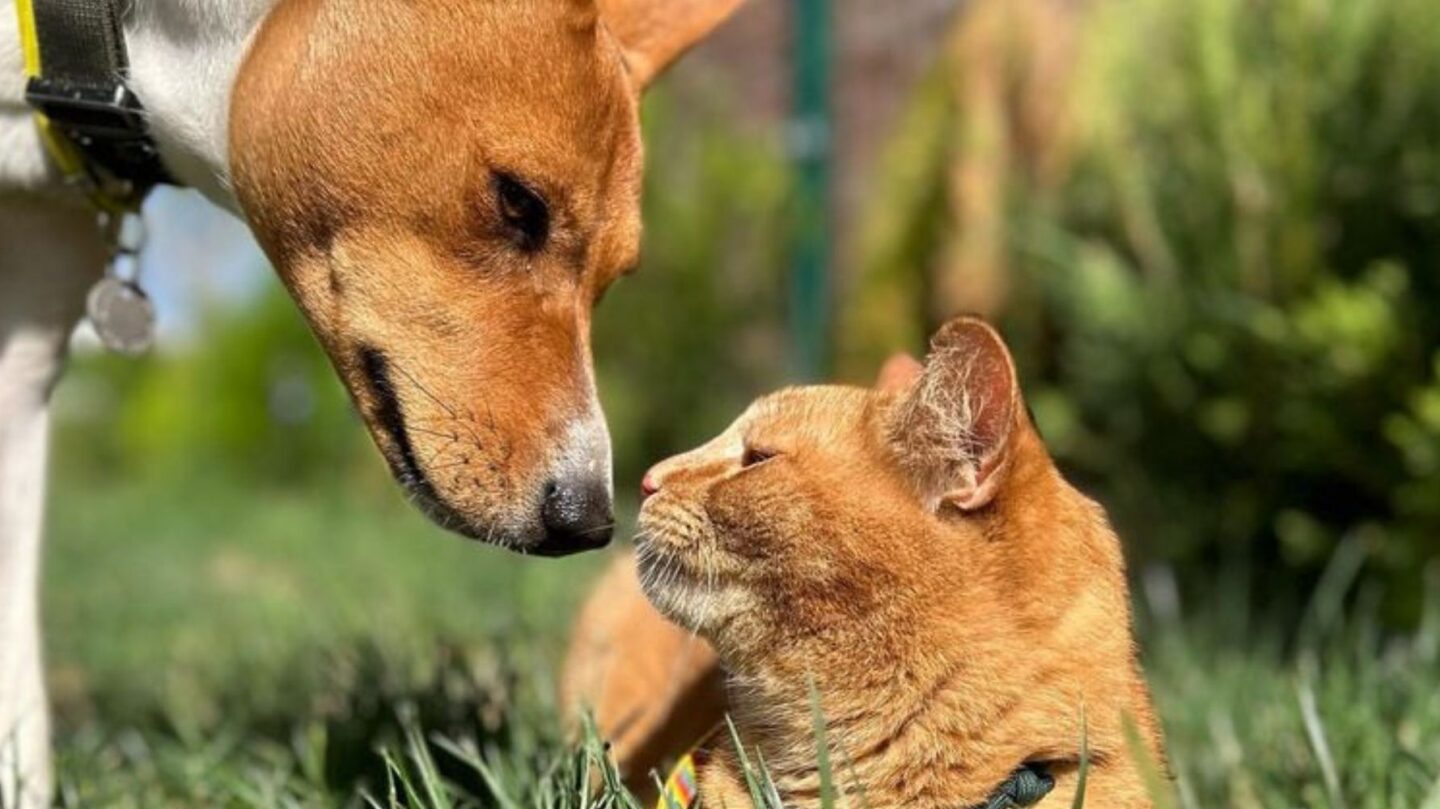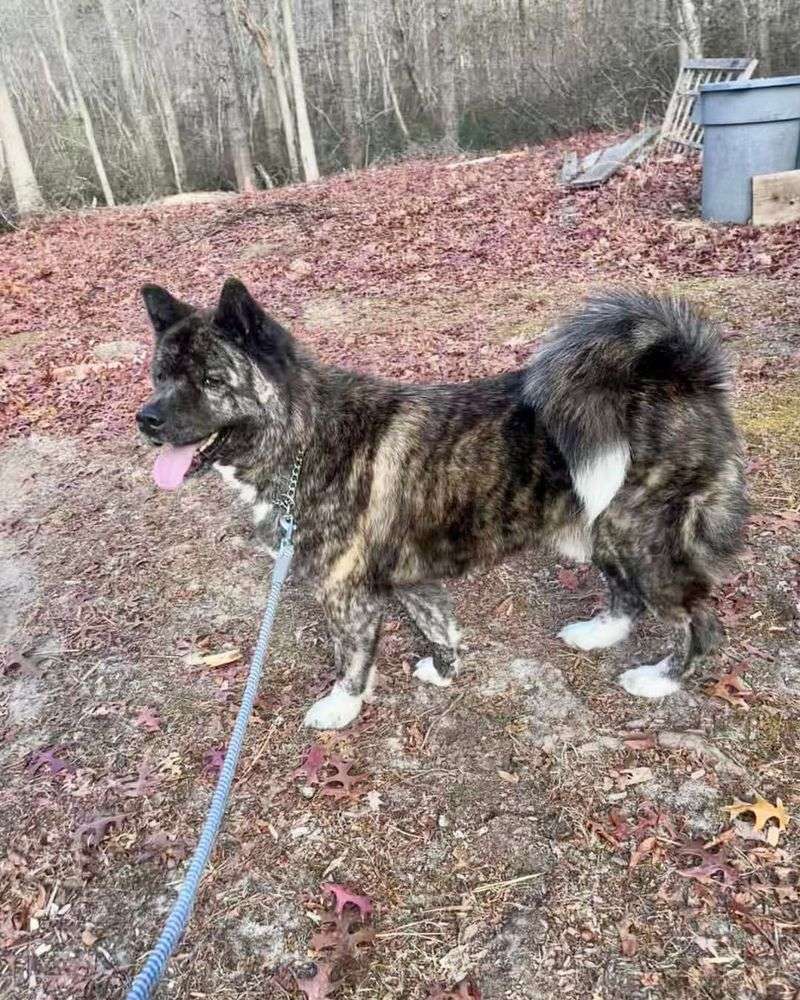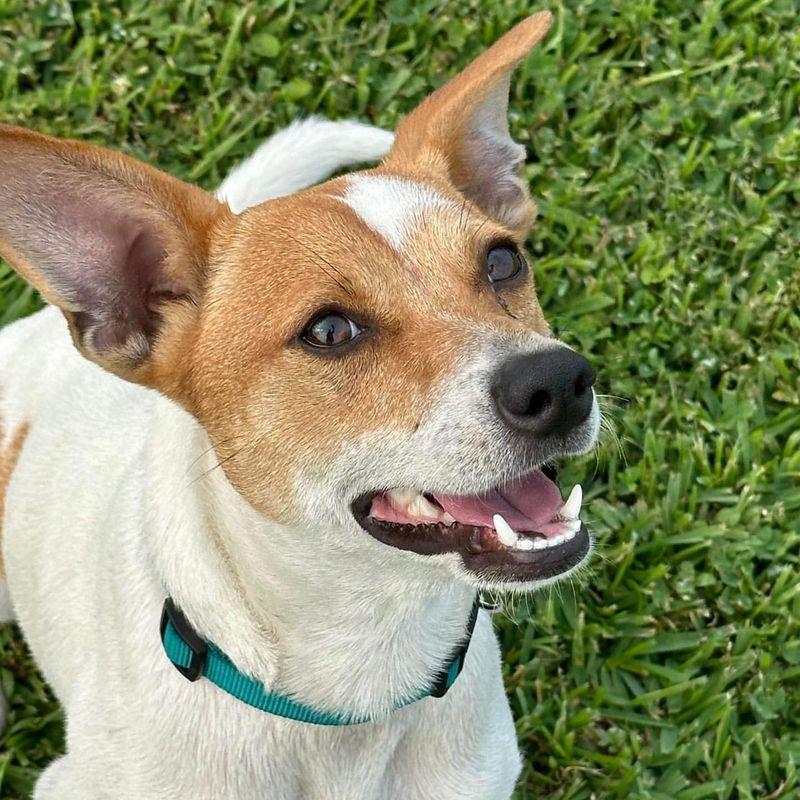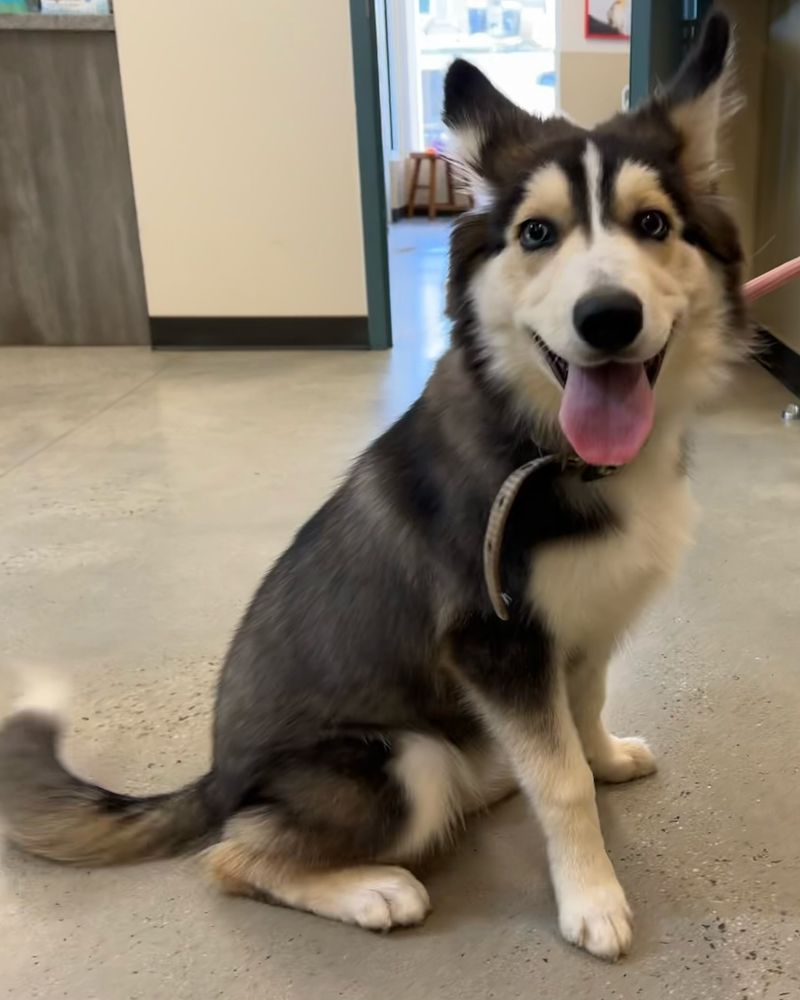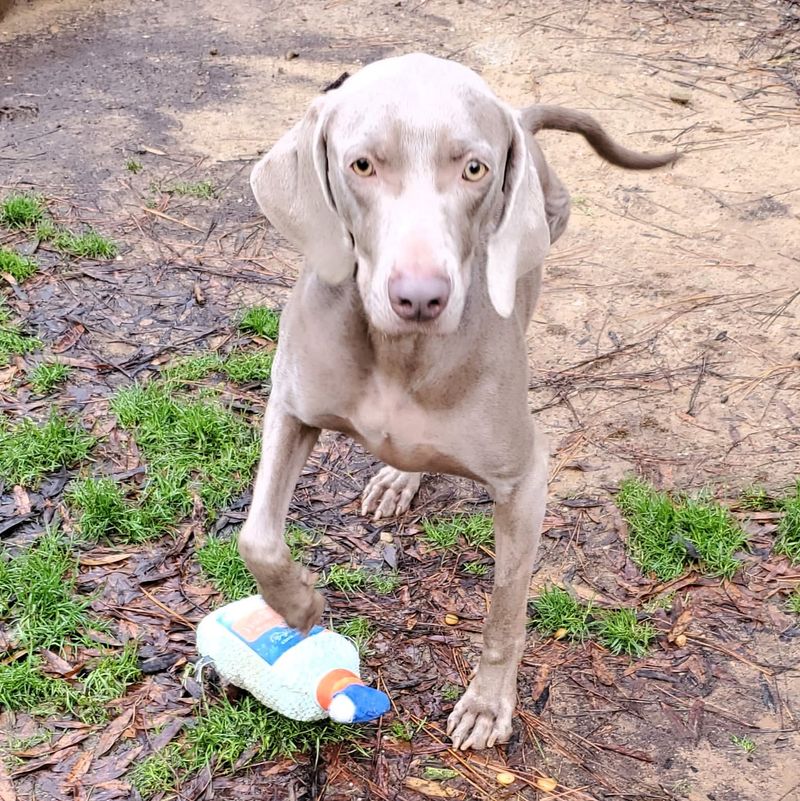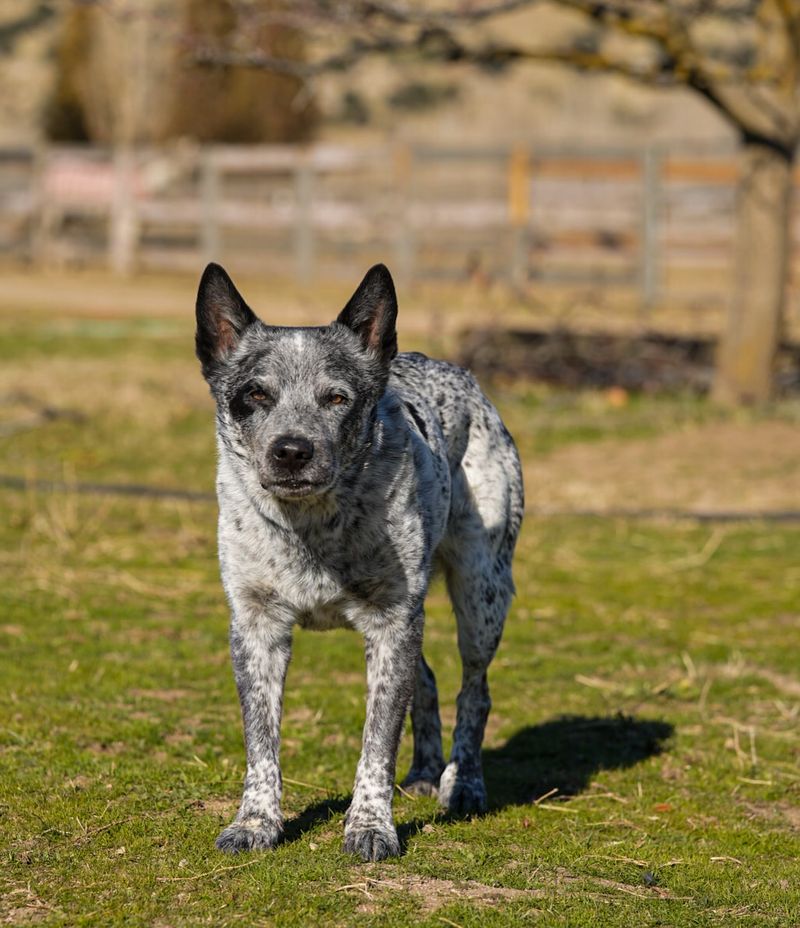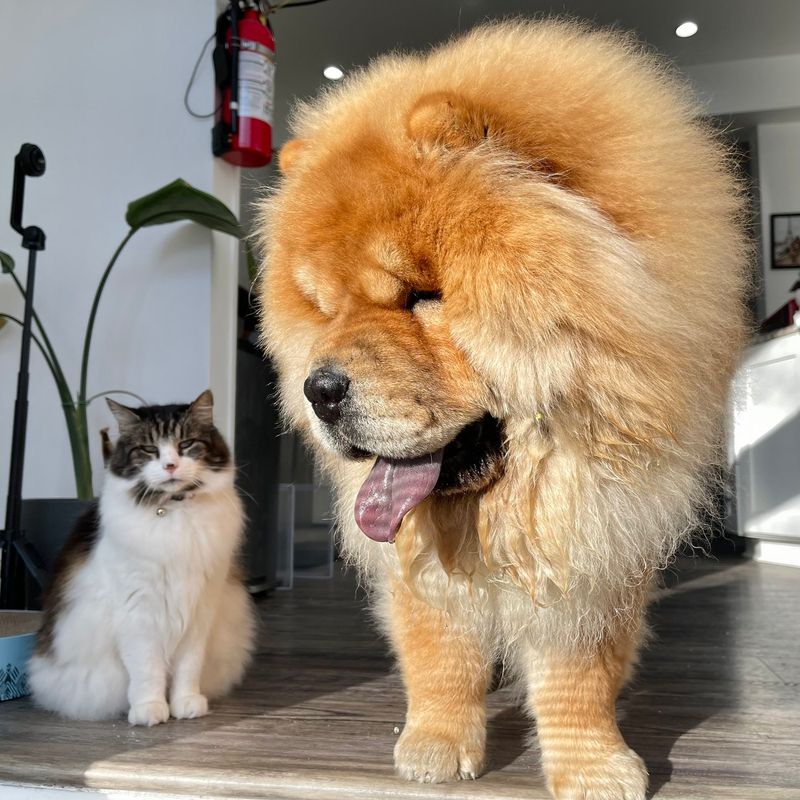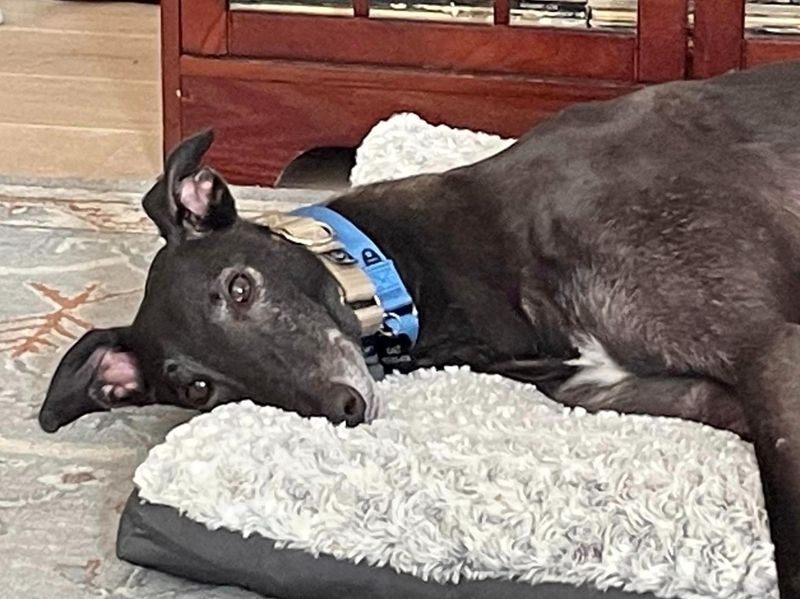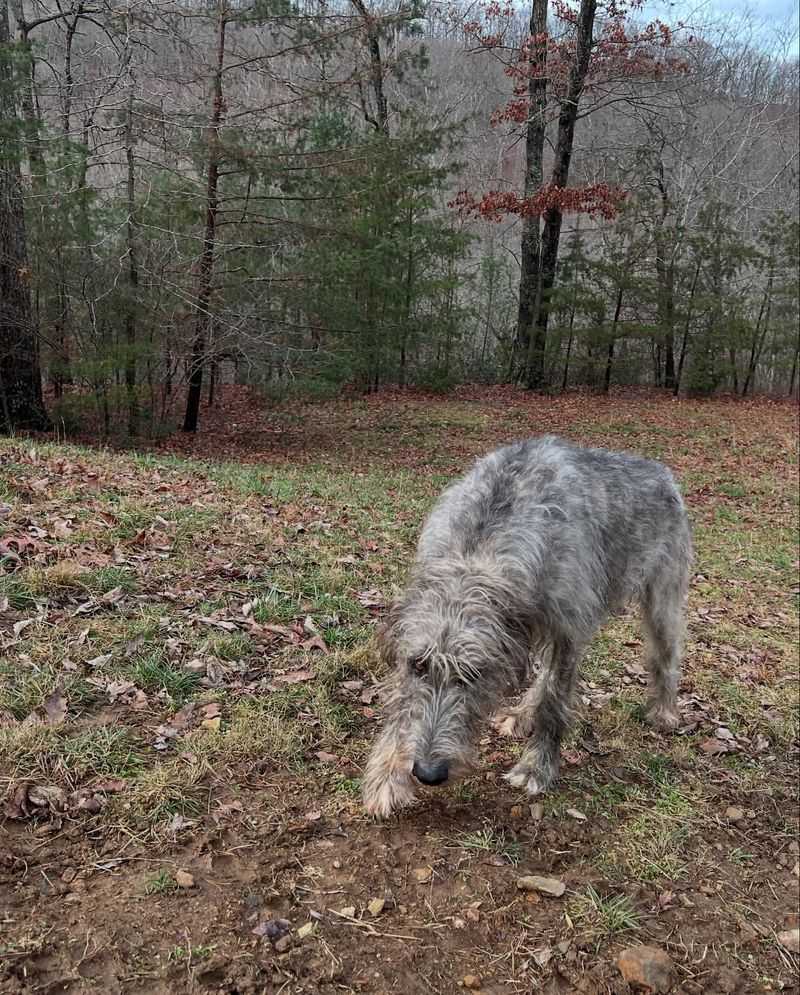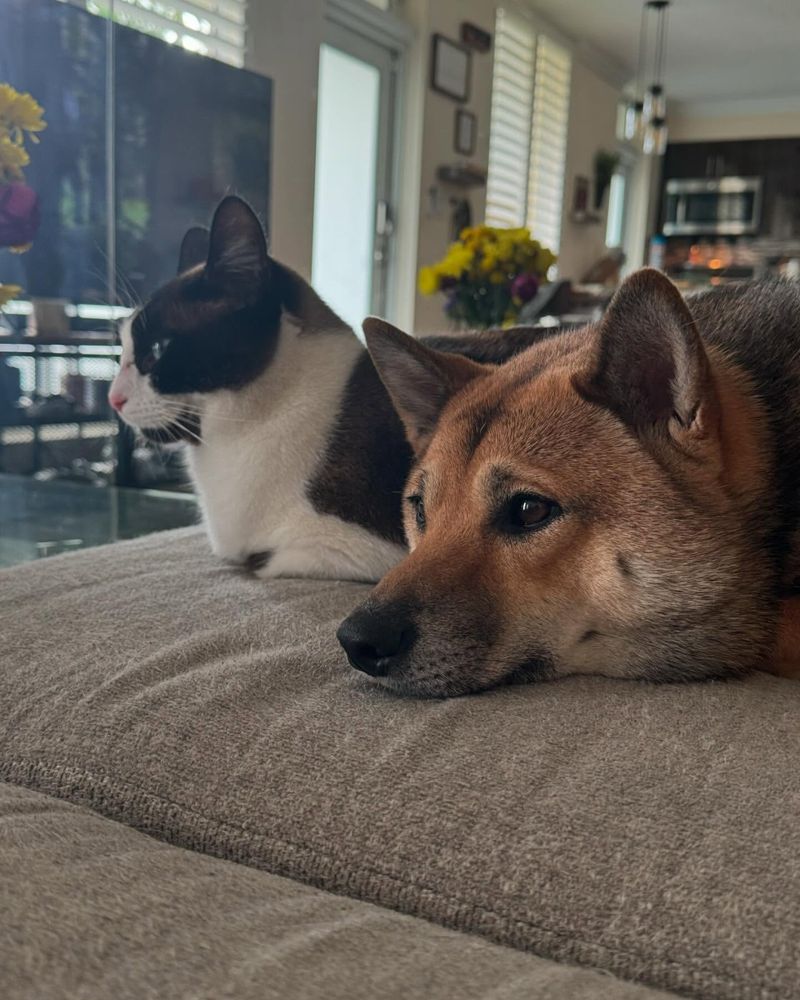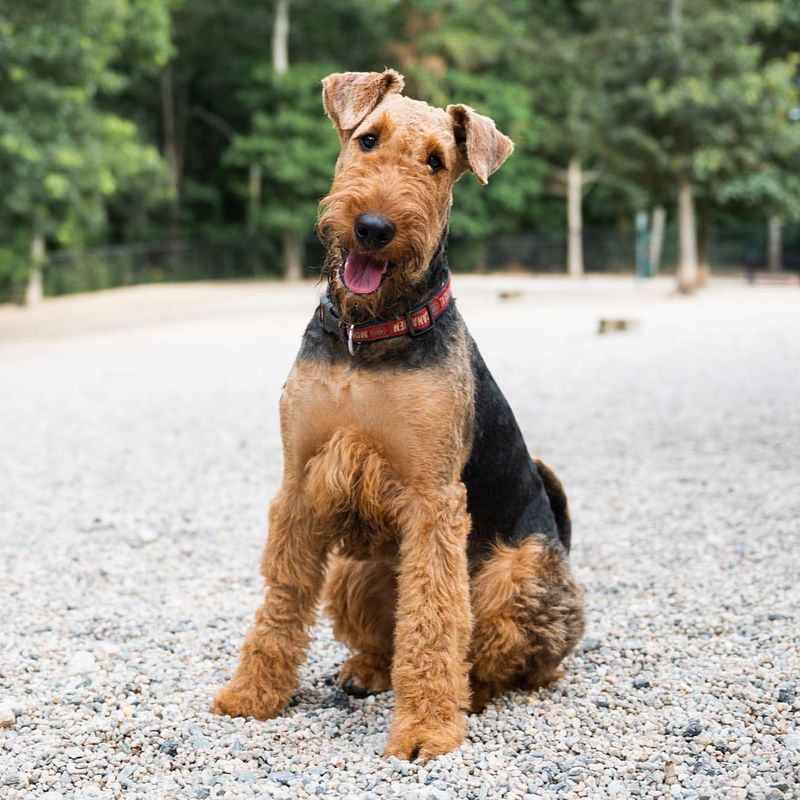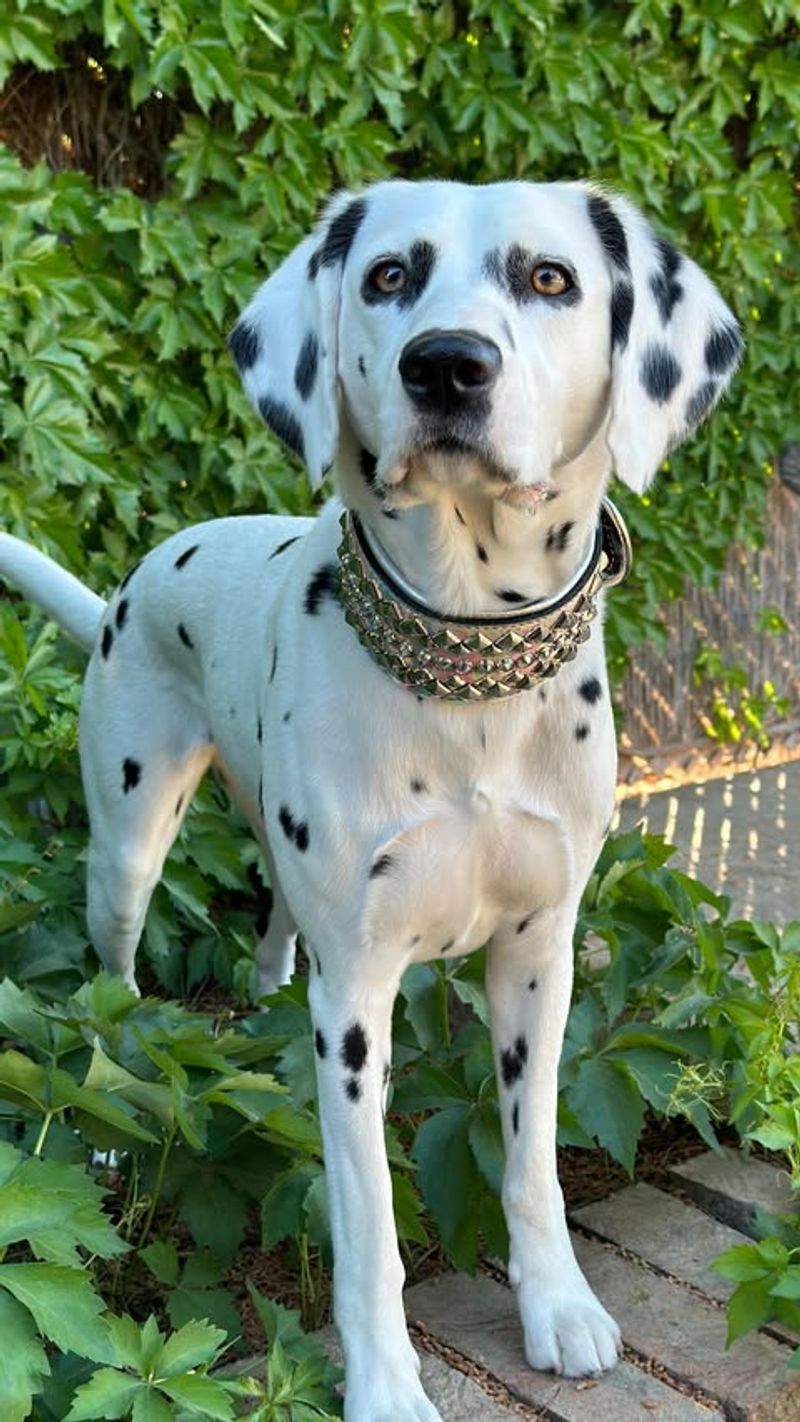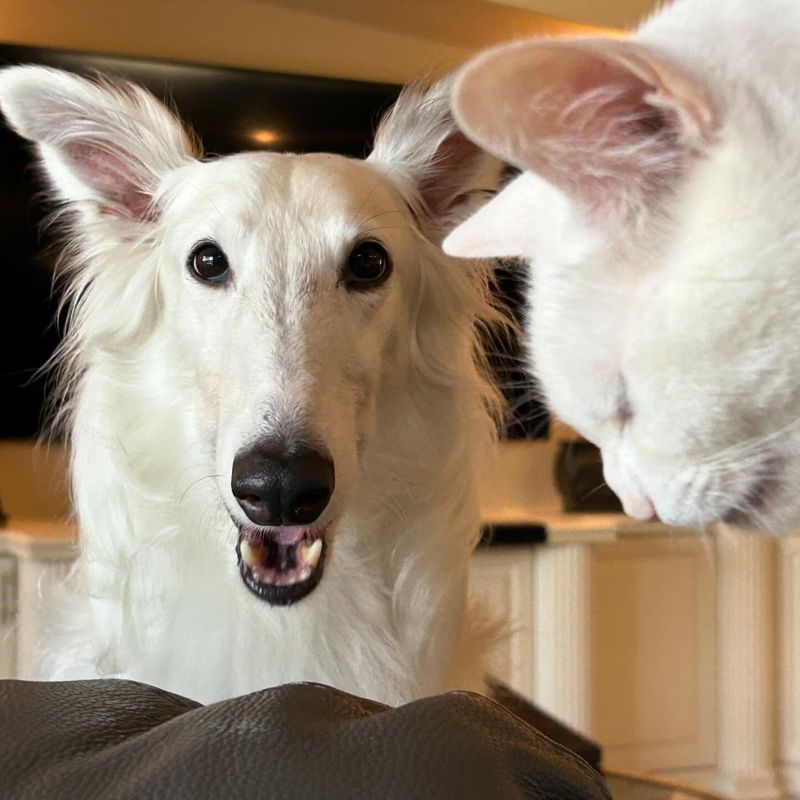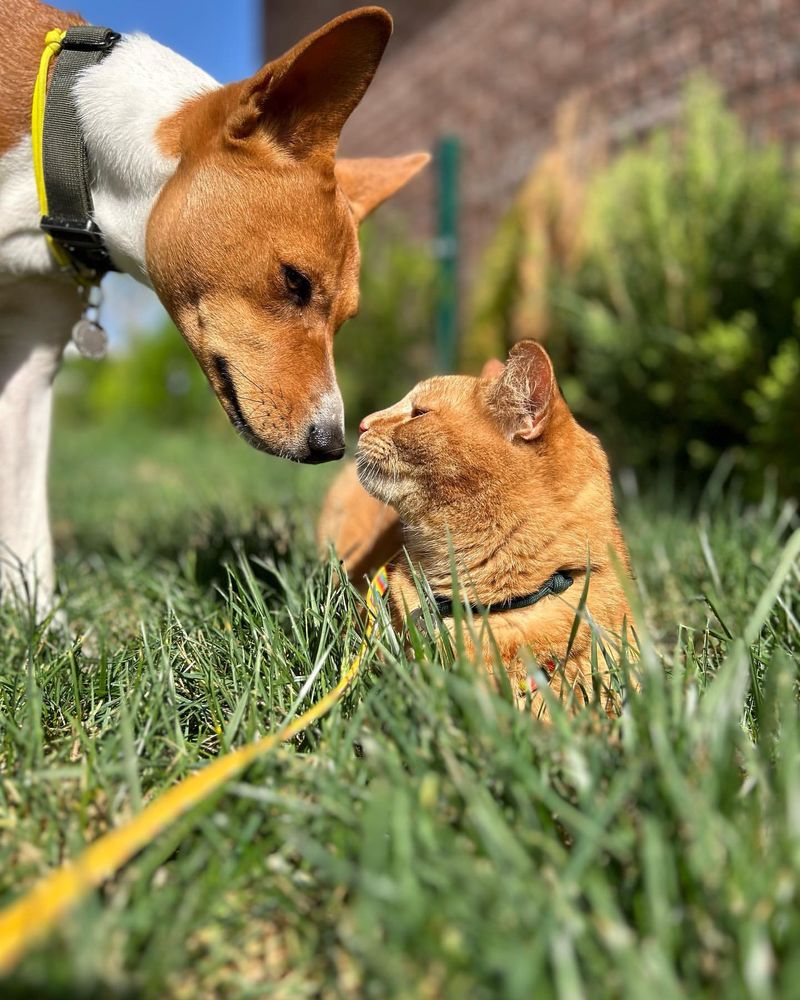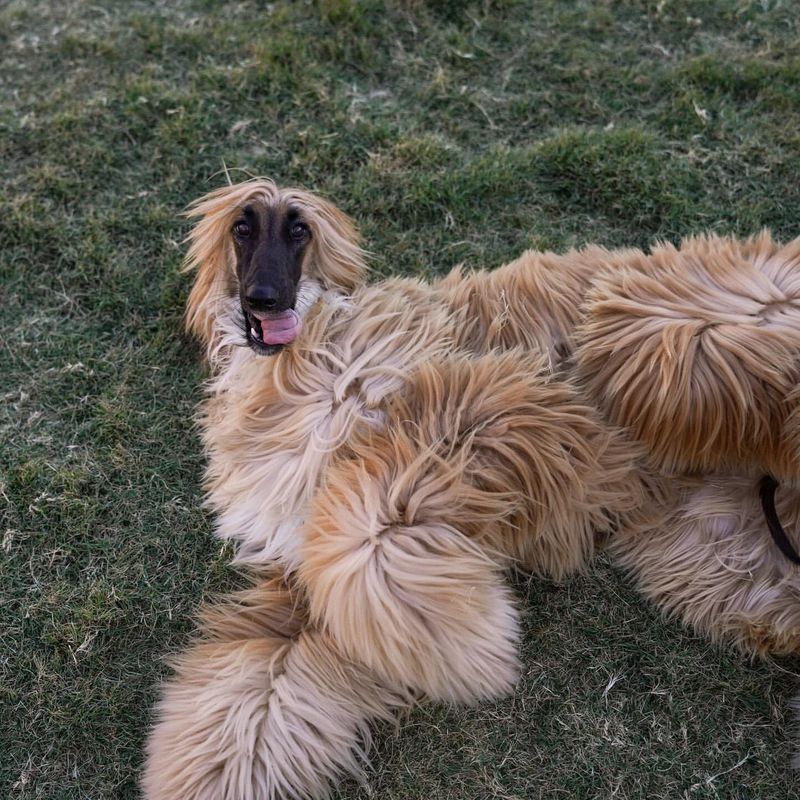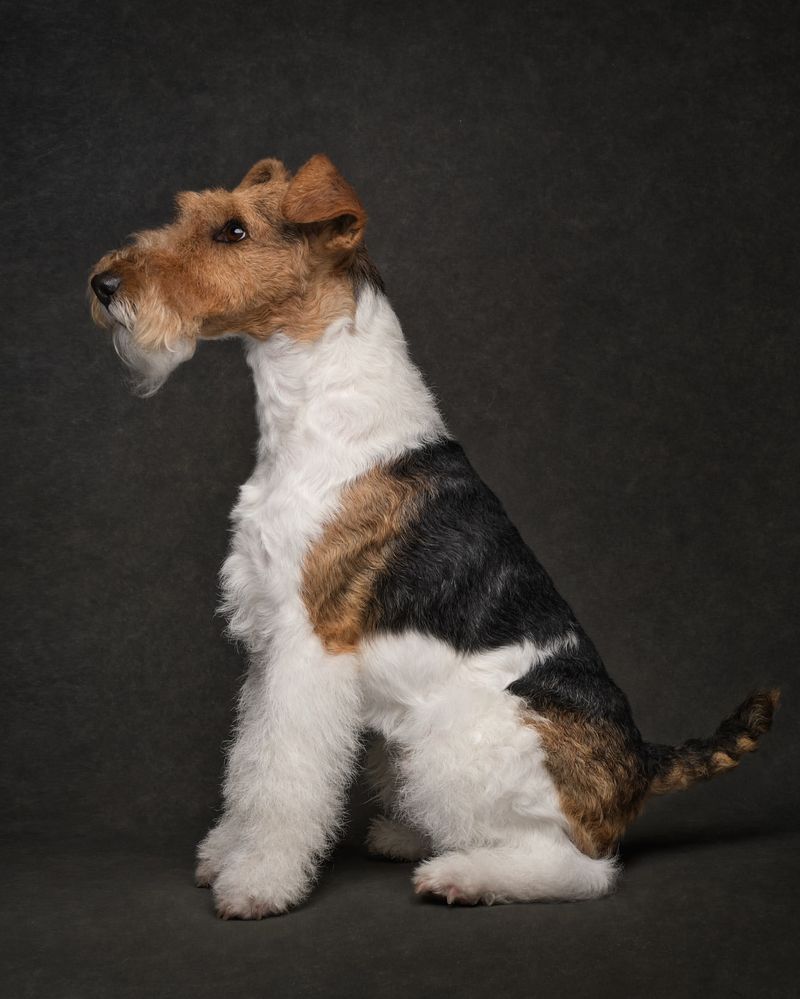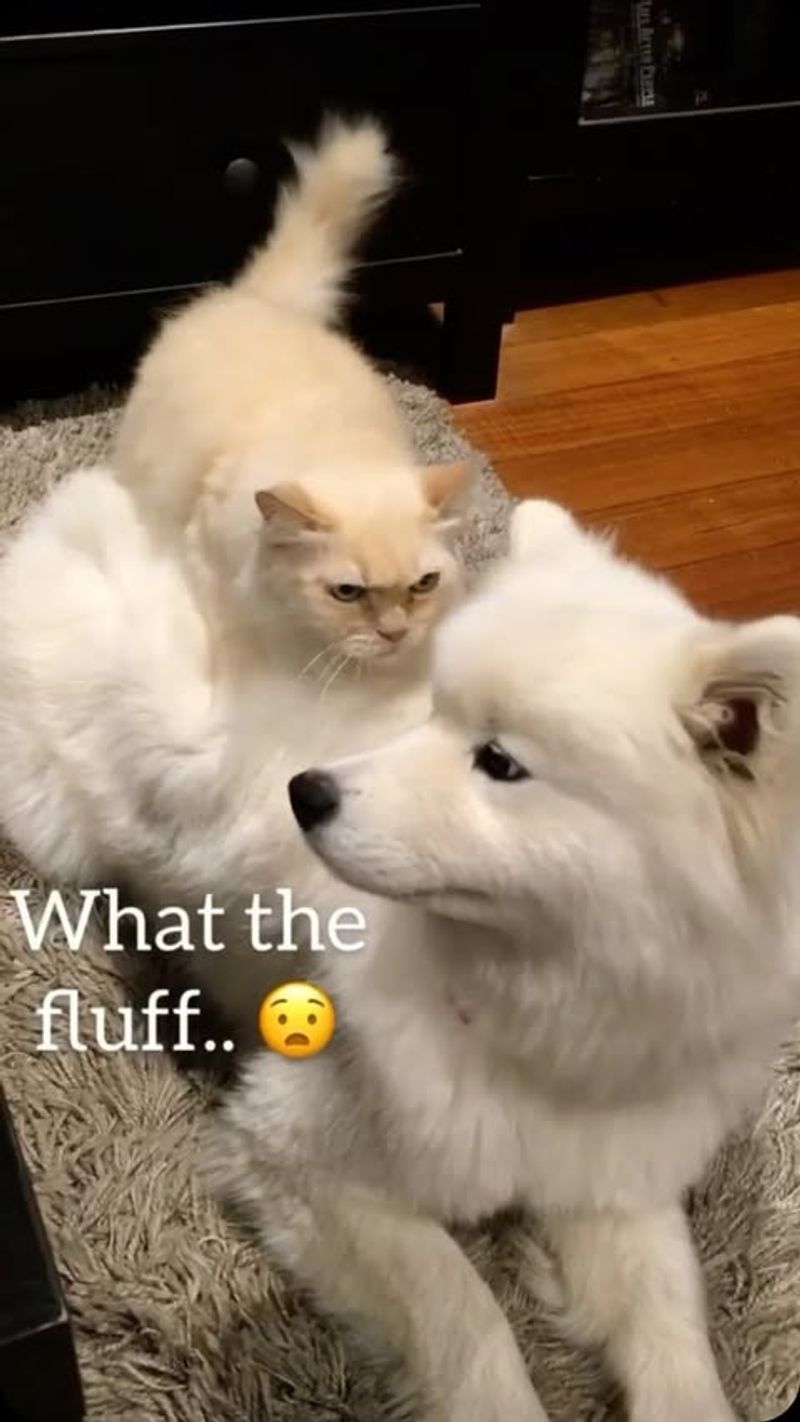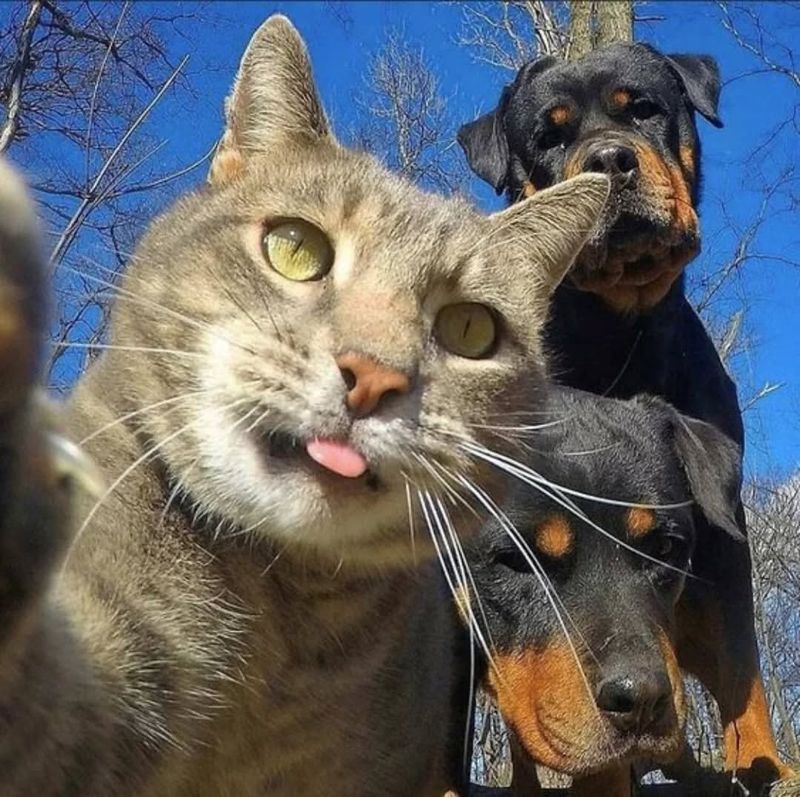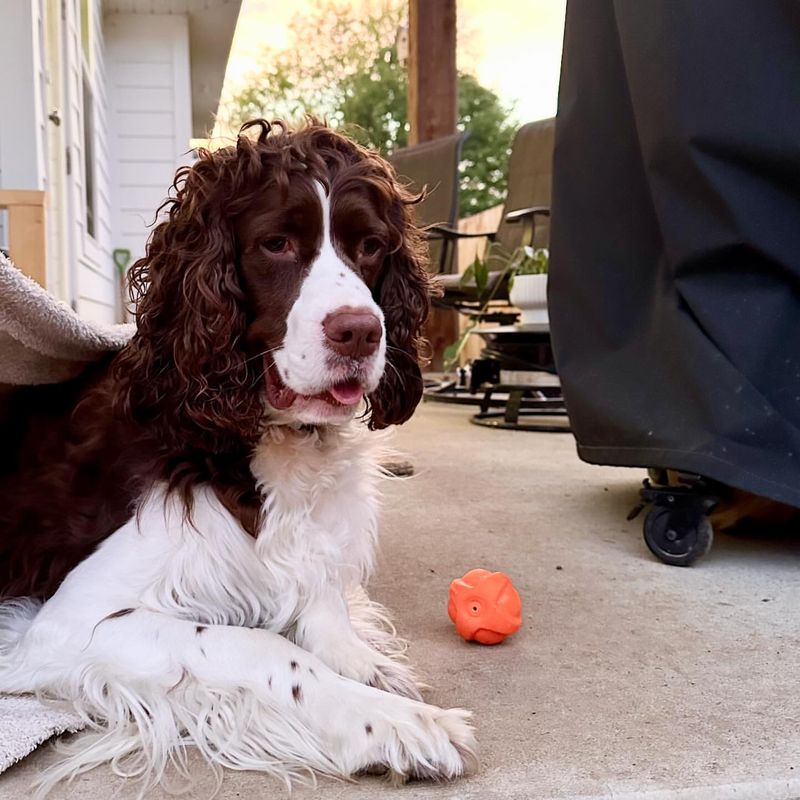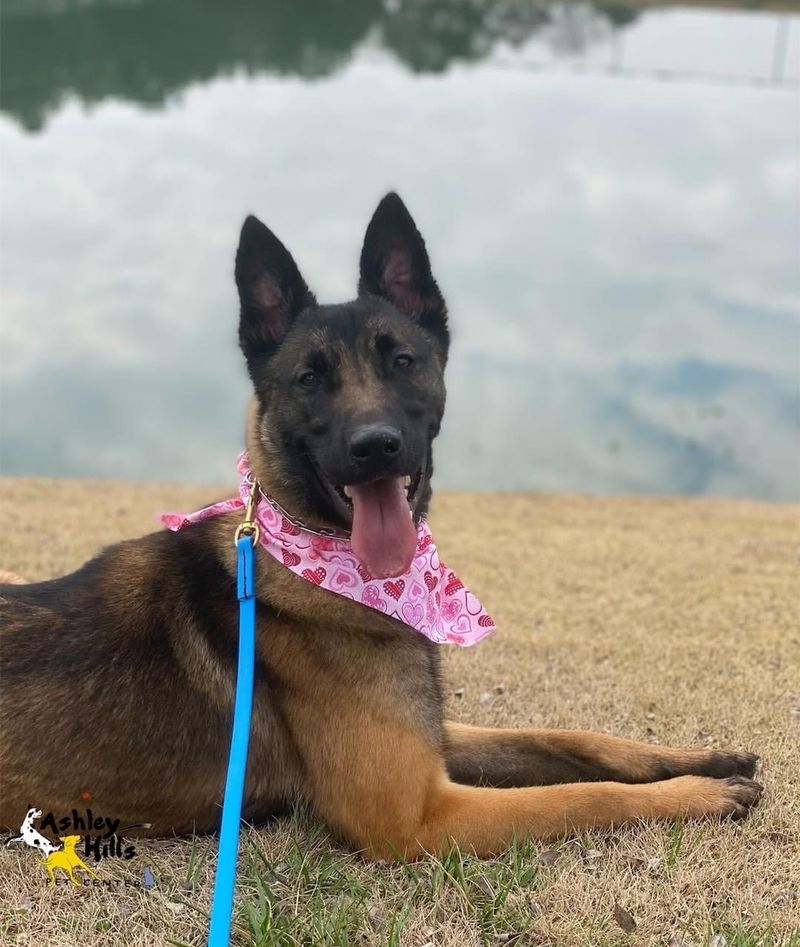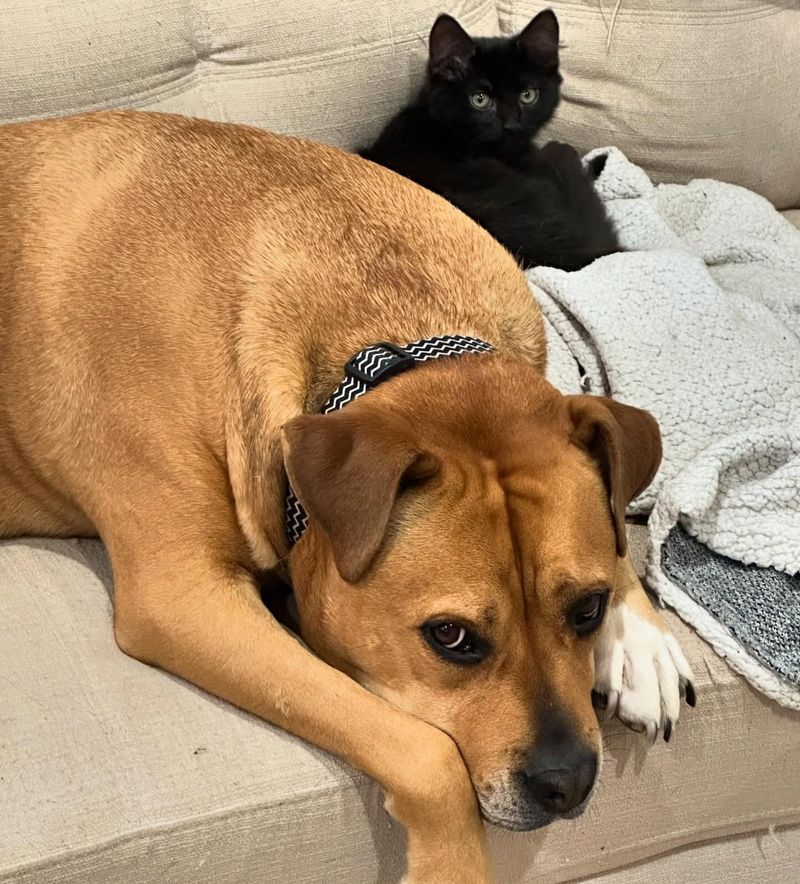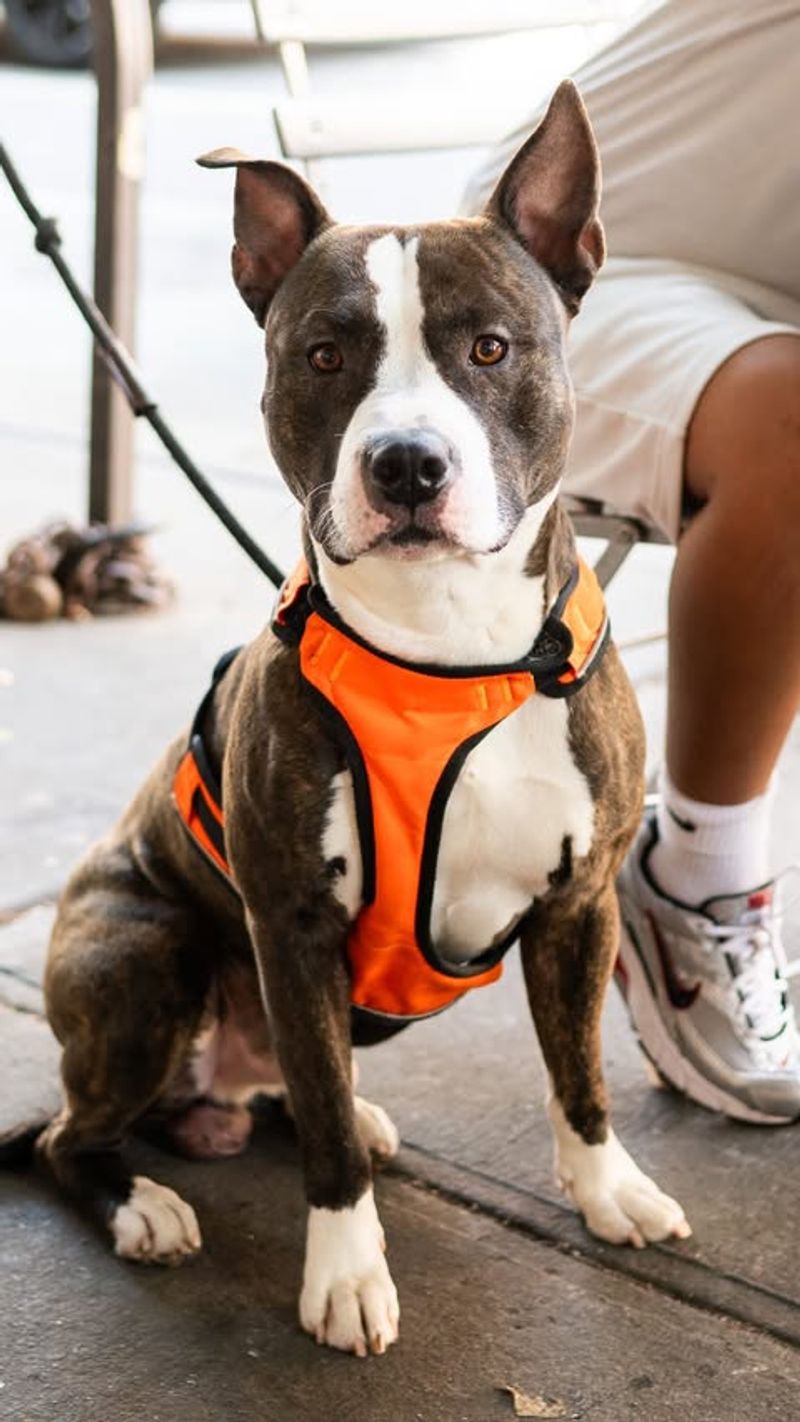While dogs and cats are often portrayed as natural adversaries, certain dog breeds have a harder time coexisting peacefully with their feline counterparts. This blog post explores 26 dog breeds that typically struggle to get along with cats. From high prey drives to territorial instincts, learn about the characteristics that make these breeds challenging for cat compatibility. Whether you’re a dog lover, cat enthusiast, or both, understanding these dynamics can help foster a more harmonious home environment.
Akita
Akitas are known for their strong personalities and loyalty, often taking charge of their environment. With a history as hunting dogs in Japan, they have a high prey drive, making them less compatible with cats. Their natural instinct to chase smaller animals can make living with a cat challenging. Even with proper training, their territorial nature may cause friction in a multi-pet household.
Introducing an Akita to a cat requires patience and supervision. It’s crucial to establish boundaries early and ensure both pets have their own safe spaces. While some Akitas may eventually tolerate feline friends, vigilance is key.
Siberian Husky
Siberian Huskies are energetic and intelligent, known for their striking appearance and lively nature. However, their strong prey drive, honed from a history of sled pulling and hunting, can pose challenges with cats.
Huskies may see cats as prey, leading to frequent chases and potential conflict. Their independent streak can make training more difficult, requiring consistent and firm guidance. Those considering a Husky-cats duo need to be dedicated to early socialization.
Creating a controlled environment with safe spaces for the cat can mitigate some risks, but caution is always advised.
Jack Russell Terrier
Jack Russell Terriers are small but mighty, characterized by their exuberant energy and spirited nature. Originally bred for fox hunting, they possess a high prey drive, making them less likely to get along with cats.
Their instinct to chase and hunt can lead to constant pursuit of feline companions. Despite their small size, Jack Russells are fearless, often ignoring the cat’s boundaries. Training is essential, focusing on impulse control and recall commands.
Supervised interactions and separate spaces for downtime can help manage their relationship, but prospective owners should remain attentive.
Alaskan Malamute
Alaskan Malamutes are powerful and dignified, bred for endurance and strength. Their history as sled dogs contributes to a robust prey drive, often making cohabitation with cats challenging.
Malamutes might view cats as potential prey, leading to unwanted chases. Their independent nature means training requires patience and consistency. Ensuring the cat has a refuge away from the dog’s reach is essential.
If raised together from a young age, some Malamutes can learn to coexist with cats, but this requires ongoing management and careful supervision to ensure a peaceful household.
Weimaraner
Weimaraners are known for their sleek appearance and energetic disposition. Bred for hunting, they have a strong prey drive, which may lead to conflicts with cats. Their instinct to chase can be difficult to curb, especially without early socialization.
Training is crucial, emphasizing recall and impulse control. Introducing a Weimaraner to a cat should be done slowly, with constant supervision to prevent any aggressive behavior.
Ensuring both the dog and cat have their own spaces can foster a more harmonious environment, though caution is always necessary with this breed.
Australian Cattle Dog
Australian Cattle Dogs are intelligent and hardworking, known for their herding instincts and loyalty. Their instinct to chase and nip can make interactions with cats challenging. Originally bred to control cattle, their high energy levels and drive mean they may see cats as something to herd.
Training and socialization are vital to manage their behavior around cats. Owners must establish clear boundaries and provide adequate mental stimulation for the dog.
Cats should have access to safe spaces away from the dog’s reach. With patience, some Australian Cattle Dogs can adapt, but caution is essential.
Beagle
Beagles are curious and friendly, known for their excellent sense of smell and hunting background. Their natural inclination to follow scents can lead to persistent pursuit of cats. While not inherently aggressive, their determination can cause stress for feline housemates.
Training is crucial to teach impulse control and ensure peaceful coexistence. Introductions should be gradual, with positive reinforcement to encourage calm behavior.
Providing both pets with their own territories can ease tensions. Although some Beagles can learn to live with cats, ongoing supervision and management are often required to maintain harmony.
Chow Chow
Chow Chows are known for their distinctive appearance and aloof demeanor. Their independent nature and strong territorial instincts can create tension with cats. Often reserved, they may react defensively if they perceive a threat to their space.
Socializing a Chow Chow with a cat requires patience and understanding. It’s important to respect the dog’s need for personal space while gradually introducing the cat.
Ensuring clear boundaries and providing each pet with their own area can help reduce friction. With careful management, some Chow Chows can coexist with cats, but vigilance is always necessary.
Dachshund
Dachshunds are charming and curious, with a history of hunting badgers. Their strong prey drive can lead to difficulties getting along with cats. Despite their small size, they are brave and determined, sometimes viewing cats as quarry.
Training is essential to manage their instinctual behaviors, focusing on recall and impulse control. Introductions should be slow and supervised, with positive reinforcement for calm interactions.
Providing both pets with individual spaces can help maintain peace. Patience and consistency are key when fostering a relationship between a Dachshund and a cat.
Greyhound
Greyhounds are known for their speed and grace, often excelling in racing environments. Their high prey drive, coupled with their instinct to chase, can make them less compatible with cats.
Adopting a Greyhound into a home with cats requires careful consideration and management. Training should emphasize recall and impulse control, with slow introductions to feline companions.
Creating a structured environment where the cat has safe spaces is crucial. While some Greyhounds can learn to live peacefully with cats, consistent supervision and reinforcement are necessary to ensure harmony.
Irish Wolfhound
Irish Wolfhounds are gentle giants, known for their calm demeanor and historical role as hunting dogs. Their size and prey drive can pose challenges when living with cats. While typically not aggressive, their instinct to chase may lead to unintended conflicts.
Socialization is key, focusing on gentle introductions and positive reinforcement. Providing a space where the cat can retreat and feel safe is essential.
Owners must be mindful of the Wolfhound’s size and energy, ensuring interactions are closely monitored. With the right approach, some Irish Wolfhounds can coexist with cats, but caution is always advised.
Shiba Inu
Shiba Inus are spirited and independent, known for their fox-like appearance and aloof nature. Their strong prey drive and territorial instincts can make them challenging companions for cats.
Training should begin early, focusing on socialization and impulse control. Introducing a Shiba Inu to a cat requires patience, consistency, and supervision to prevent aggressive behavior.
Both pets should have distinct areas to reduce territorial disputes. While some Shiba Inus can learn to tolerate cats, ongoing management and clear boundaries are essential for a peaceful coexistence.
Airedale Terrier
Airedale Terriers are intelligent and energetic, often dubbed the “King of Terriers.” Their strong prey drive and tenacity can lead to conflicts with cats. Originally bred for hunting and retrieving, they might see cats as potential prey.
Training is vital, emphasizing commands like sit, stay, and recall to manage impulse control. Introductions should be gradual, with positive reinforcement for calm behavior.
Providing both the dog and cat with separate spaces is important for harmony. While some Airedale Terriers can coexist with cats, consistent supervision and boundaries are crucial.
Dalmatian
Dalmatians are lively and charming, known for their distinctive spotted coats. Their high energy levels and strong prey drive can make living with cats challenging.
Training should focus on impulse control and positive socialization from an early age. Introducing a Dalmatian to a cat requires careful management and constant supervision.
Ensuring both pets have their own spaces and providing plenty of exercise for the Dalmatian can help reduce tension. With patience and dedication, some Dalmatians can learn to live alongside cats, but vigilance is always necessary.
Borzoi
Borzois are elegant and graceful, known for their speed and agility. Their history in hunting and coursing means they possess a strong prey drive, often making them incompatible with cats.
Training should focus on recall and impulse control, with careful supervision during introductions. Borzois may see cats as prey, leading to chases and potential conflict.
Providing a structured environment with clear boundaries for both pets is crucial. While some Borzois can adapt to living with cats, ongoing management and vigilance are essential to maintain a peaceful home.
Basenji
Basenjis are known for their intelligence and independence, often referred to as “barkless dogs.” Their strong prey drive can lead to difficulties cohabitating with cats. Originally bred for hunting, they are quick and agile, sometimes viewing cats as prey.
Training should focus on recall and socialization, with gradual introductions to feline companions. It’s important to create a safe space for the cat to retreat if needed.
Patience and consistency in training can help, but Basenjis generally require ongoing supervision and management to coexist peacefully with cats.
Afghan Hound
Afghan Hounds are known for their striking appearance and aloof demeanor. Their hunting background contributes to a strong prey drive, often making coexistence with cats challenging. Their independent nature requires consistent training from an early age.
Introducing an Afghan Hound to a cat should be done gradually, with supervision and positive reinforcement. Ensuring the cat has safe spaces to retreat can help mitigate conflicts.
Although some Afghan Hounds can adapt to living with cats, their high prey drive means vigilance is necessary to maintain peace in a multi-pet household.
Fox Terrier
Fox Terriers are energetic and playful, known for their tenacity and hunting instincts. Their strong prey drive can make interactions with cats challenging. Bred to hunt and chase, they might view cats as quarry, leading to conflicts.
Training is essential, focusing on impulse control and recall commands. Introducing a Fox Terrier to a cat requires patience, supervision, and gradual exposure.
Providing separate spaces for both pets can help reduce tension. While some Fox Terriers may adapt to living with cats, consistent training and management are crucial.
Vizsla
Vizslas are known for their affectionate nature and energetic disposition. Bred as hunting dogs, they possess a strong prey drive, making them less compatible with cats. Their natural inclination to chase can lead to conflicts in multi-pet households.
Training should focus on impulse control, recall, and early socialization. Introducing a Vizsla to a cat requires careful management and patience.
Ensuring both pets have their own territories and providing plenty of exercise for the Vizsla can help reduce tension. With dedication, some Vizslas can learn to coexist with cats, but vigilance is key.
Samoyed
Samoyeds are friendly and sociable, known for their fluffy white coats and cheerful demeanor. Despite their amicable nature, their strong prey drive can pose challenges when living with cats.
Training should emphasize socialization and impulse control, with gradual introductions to feline companions. Ensuring the cat has safe spaces to retreat can help maintain peace.
While some Samoyeds can learn to coexist with cats, consistent monitoring and management are crucial. Providing plenty of exercise and mental stimulation can also help reduce potential conflicts in a multi-pet household.
Rottweiler
Rottweilers are known for their strength and loyalty, often serving as guard dogs. Their protective instincts and territorial nature can create challenges in homes with cats. Proper training and socialization are vital to prevent aggressive behavior.
Introducing a Rottweiler to a cat requires patience and supervision. It’s important to establish boundaries early and provide each pet with their own space.
With dedicated training, some Rottweilers can learn to live peacefully with cats, but consistent management and vigilance are necessary to ensure harmony in a multi-pet environment.
English Springer Spaniel
English Springer Spaniels are energetic and friendly, known for their enthusiasm and hunting background. Their strong prey drive can make interactions with cats challenging.
Training should focus on recall and impulse control, with gradual introductions to feline companions. Ensuring the cat has safe spaces to retreat can help reduce tension.
While some English Springer Spaniels can adapt to living with cats, consistent supervision and management are crucial. Providing plenty of exercise and mental stimulation can also help minimize conflicts in a multi-pet household.
Rhodesian Ridgeback
Rhodesian Ridgebacks are known for their strength and independence, originally bred for hunting lions. Their strong prey drive and protective instincts can make living with cats challenging. Proper training and early socialization are crucial.
Introducing a Rhodesian Ridgeback to a cat requires patience, supervision, and gradual exposure. Ensuring both pets have their own spaces is important for reducing tension.
With dedication and consistent management, some Rhodesian Ridgebacks can learn to coexist with cats. However, vigilance is always necessary to maintain harmony in a multi-pet household.
Belgian Malinois
Belgian Malinois are intelligent and driven, often employed as working dogs due to their agility and focus. Their strong prey drive and protective instincts can create challenges with cats.
Training is essential, focusing on impulse control and socialization from a young age. Slow introductions and supervised interactions are key to preventing conflicts.
Both pets should have defined spaces to reduce territorial disputes. While some Belgian Malinois can adapt to living with cats, ongoing management and attention are vital to ensure a peaceful coexistence.
Bullmastiff
Bullmastiffs are powerful and loyal, known for their protective instincts and gentle demeanor. Their size and territorial nature can pose challenges in homes with cats. Proper training and socialization are crucial to prevent aggressive behavior.
Introducing a Bullmastiff to a cat requires patience and careful management. It’s important to set boundaries early and ensure both pets have their own safe spaces.
With consistent training, some Bullmastiffs can learn to coexist with cats, but vigilance is always required to maintain harmony in a multi-pet environment. Patience and dedication are key.
American Pit Bull Terrier
American Pit Bull Terriers are known for their strength and determination, often misunderstood due to their reputation. Their prey drive and protective nature can make living with cats challenging.
Training should focus on socialization and impulse control, with gradual introductions to feline companions. Ensuring the cat has safe spaces to retreat is important to reduce tension.
With dedication and consistent management, some American Pit Bull Terriers can learn to live peacefully with cats. However, vigilance is always necessary to maintain harmony in a multi-pet household. Positive reinforcement is key.
